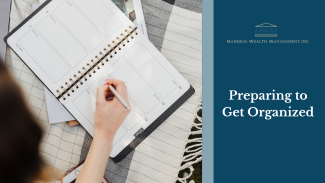
Preparing to Get Organized
Let’s get real: Maintaining a home that looks like one featured in a magazine is not an easily attainable goal. But organizing in a way that makes sense for your family and setting goals and expectations that everyone can follow is.
Functional organization—organization that works for everyone in your home—doesn’t happen overnight. It takes time to identify the problem, set new goals, plan, and prepare before you execute.
So before you invest in solutions that look like they might work, follow these tried-and-true rules to guide any organization project:
Always start by cutting the clutter
Less stuff means less to organize, which means you’ll be able to see solutions and needs much more clearly once you eliminate some excess.
Take a good look around, place important things in their proper places, and then pare down.
Start with the easiest items to let go of—tossing expired products, out-of-date paperwork, and anything that’s broken. Next, move through each room, and ask yourself, “When was the last time I used it? Do I have two of these? Would it be of better use if I donated it?” If you can’t remember when it was used or answered yes to the other two questions, then bag it up for charity.
Decide where you will donate
As a general rule, remember that it’s always better to donate than to accumulate. Identify local organizations that accept donations, and then make a list of the location, hours, and what items they’re most in need of.
Some common take-anything organizations include The Salvation Army and Goodwill, but don’t forget about animal shelters for donating spare blankets and towels, or schools for donating old books and supplies. Give your old technology a new life by donating to local nonprofits and charities in need of old electronics.
Rethink, reuse, and repurpose
Identify pieces of furniture that are great for storage, but maybe not being put to good use. There are no rules saying an armoire can’t be updated to handle your office supply storage needs, or that a versatile bookcase can’t be of better service in your entryway. Think small too, considering how a vase might be able to hold something more than flowers.
Before going out to purchase new storage solutions, always make sure to assess and get creative with what you already have.
Choose your needs and tools carefully
Even after you’ve decluttered, you might be inspired to enact new solutions in other areas of your home. Prioritize these needs carefully by identifying your biggest problem areas and considering the amount of wear and tear or use the solution will endure.
If you find that your biggest headache is your home office, invest in a good quality shredder, hole punch, or binders for help in organizing paperwork. This may seem like a lot of work up front, but it will save you a lot of time and effort in the long run.
Create an action plan and schedule that works for you
The easiest way to create order is to acknowledge that you don’t have to do it all at once.
Figure out what time schedules work best for you. Are you more likely to stick to a project if you schedule out a full day to get started? Or does your schedule only allow for specific blocks of time when they present themselves? If you can’t decide, breakdown each larger goal into smaller blocks of time—like all-day projects, tasks that only take a few hours, and some even smaller 20-minute to-dos that you can fit in anywhere.
Remember, don’t get overwhelmed. Simplifying your home can be a big project, in which you will reap big rewards. It’s important to enact solutions that you can stick to.
This article was prepared by ReminderMedia.
LPL Tracking #1-05210724

